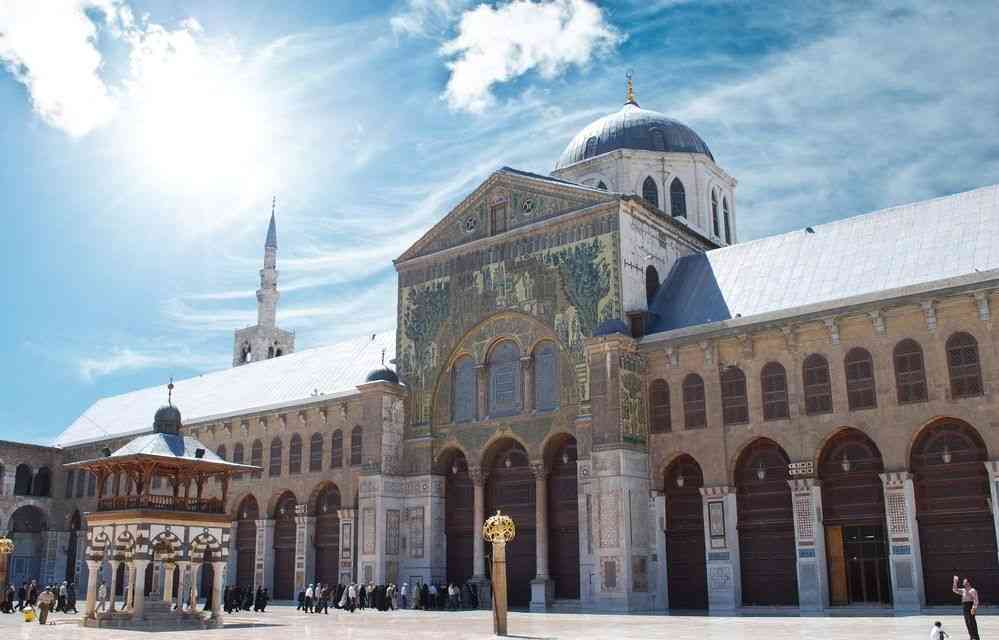Architecture has greatly affected the human psyche, especially the old buildings, which are still preserving their beauty and legacy to the present day, and engineers still take many elements from them and use them in their designs and learn from them as well, and from these buildings are 2000 years old or even more, including what many different civilizations and beliefs have lived through a lot.
One of the examples of these buildings is the Great Umayyad Mosque in Damascus, this great architectural edifice that had a positive impact on religious architecture and is an example of religious coexistence between beliefs. The Great Umayyad Mosque was contemporary with five civilizations with different beliefs, which are the Aramaic civilization (the Iron Age), and the pagan Roman civilization. , Roman Christian civilization and Islamic civilization.
History of the building
The building is located in the old city of Damascus. The history of the mosque’s construction dates back to the Umayyad era. It was built by order of “Al-Walid Ibn Abd Al-Malik” and its true date goes back to 1200 BC, It was a temple for the Aramean civilization for its worshipers, the god (Hadad) "the god of rain" [1]
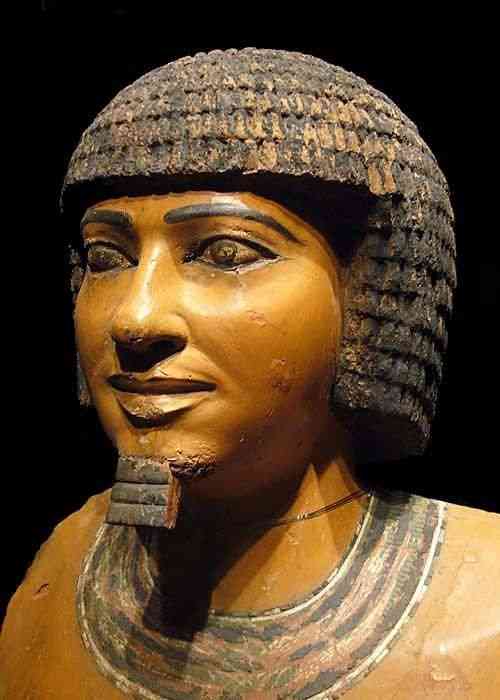
Goddess Temple "Hadid"
The building was in the beginning a temple for the Aramaeans to worship the god of fertility and rain, and it remained a temple of the god that was set for a period of 1264 years until the Romans occupied Damascus in the year 64 AD and later turned into a Roman temple.
Temple of the god Jupiter
This temple was built under the rule of the Emperor Augustus [1] and was dedicated to his worshipers, the Roman god Jupiter, "the god of heaven and thunder, and the king of the gods." Baltimnos and has four entrances and its effects are still present to our time.
John the Baptist Church
Damascus was distinguished for its great and varied architectural wealth, and it hosted one of the largest landmarks in the world at that time, the Church of John the Baptist, which was built by order of Theodosius I. The Baptist was buried in this church and his tomb was still present, but the church was not built specifically for John the Baptist, but rather was dedicated to it in the sixth century AD, and the church was built over the Roman temple.[2]
- The most important parameters
One of the most important landmarks is the tomb of Prophet Yahya (John the Baptist), where his head was buried in that place suitable for Muslims, where the tomb of the Prophet lived, and he himself John the Baptist, standing to this day. And when Muslims build the mosque and start the grave, the grave was never a religion for Muslims and Christians.
Umayyad Mosque
After the Muslims besieged Damascus, Khaled bin Al-Walid entered it and entered it in peace, and it was annexed to the Umayyad state after that, and in the era of Al-Walid bin Abdul-Malik, the Umayyad Mosque was built in the southern part of the church. Bin Abd al-Malik restores all churches to Christians. [3]
“History has written that Muslims and Christians have prayed next to each other for 100 years, as Muslims prayed in the direction of Mecca (the south), and Christians prayed in the direction of the east, and this indicates the great extent of religious coexistence between Christians and Muslims.”
Architectural buildings carry the meanings of human coexistence with those around him despite the difference, so you find buildings that bring people together despite their differences, which increases the knowledge of others correctly and appropriately, regardless of the beliefs they hold, but there are certain buildings that only the owners of one belief enter, which are religious buildings that are considered schools For ethics and dealing with society in all its sects.
Mosque construction and design
The mosque was built in several stages, in every kingdom and civilization, some creative and architectural touches were added to it, so it produced one of the most beautiful buildings in history and is a collector of arts and creativity in one place.
The mosque consisted of several wonderful parts that varied from minarets, domes, facades, niches for prayer, doors and other innovations from that era.
- Minarets
The mosque contains the most beautiful minarets in the world and that was due to the great diversity in their design in every era, and among these minarets:
Minaret "bride"
The minaret was constructed in the Abbasid era, and there is a difference that this minaret is part of the original structure of the mosque or that it was built above the original, so no one can determine the time of its construction precisely.
architectural design
The minaret was designed to have a square base, as this shape was common at that time. This minaret consists of a square base, a square body, and two balconies for calling to prayer, as this balcony is decorated with some Islamic inscriptions. Then a square hull was built over the balcony containing the ornaments, then the bush was built, which is a region in which the shape turns from square to circular and inscribed with circular lines and Islamic elements, then the top of the spherical minaret, and in the new ages, a crescent was placed above the top of the minaret, this gives perfection to the minaret and beauty.
Minaret Jesus
It is the longest minaret in the mosque and was one of the five largest buildings in the world according to the book "The longest buildings in history" during four centuries. The minaret was built in the Umayyad era and is located on the left of the Eagle Dome. It was built in two stages. The first phase was built in the Ayyubid era, the lower section and the upper body were built by the Ottomans.
Architectural Design
As I mentioned earlier, the minarets were designed in two different eras, so you may feel the difference in styles between the upper and lower part, as the upper part of the body is eight and turns into a circular and the lower body is square, where the lower body is distinguished by the presence of windows in the form of arches in the style of the Ayyubids, so the single arch is engraved inside of it also two arches and above it is a star and the body The upper is an octagonal body that turns into a circular hull in the jusq and is distinguished by its Ottoman style, as the top of the minaret is like the top of the Ottoman minarets and is pointed. You feel as if you see one of the minarets of Aya Sophia or the Sultan Ahmed Mosque.
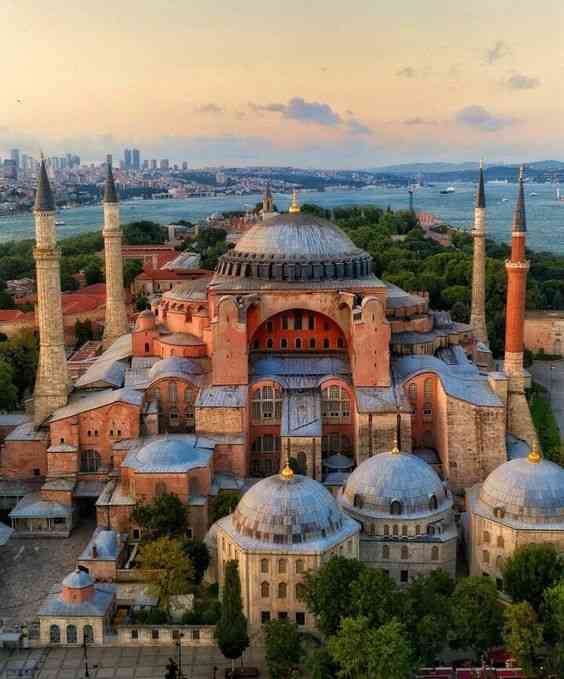
- Domes
The mosque contains the two most beautiful domes in the world, which are the Eagle Dome and the Treasury Dome
Eagle Dome
A large dome built over the main block of the entrance, its base is octagonal and contains 16 windows, and this helps to get rid of the high temperature in the building and reduce the weight of the dome on the building. The dome was built of black stone during the era of the Ottomans.
Dome of the Treasury
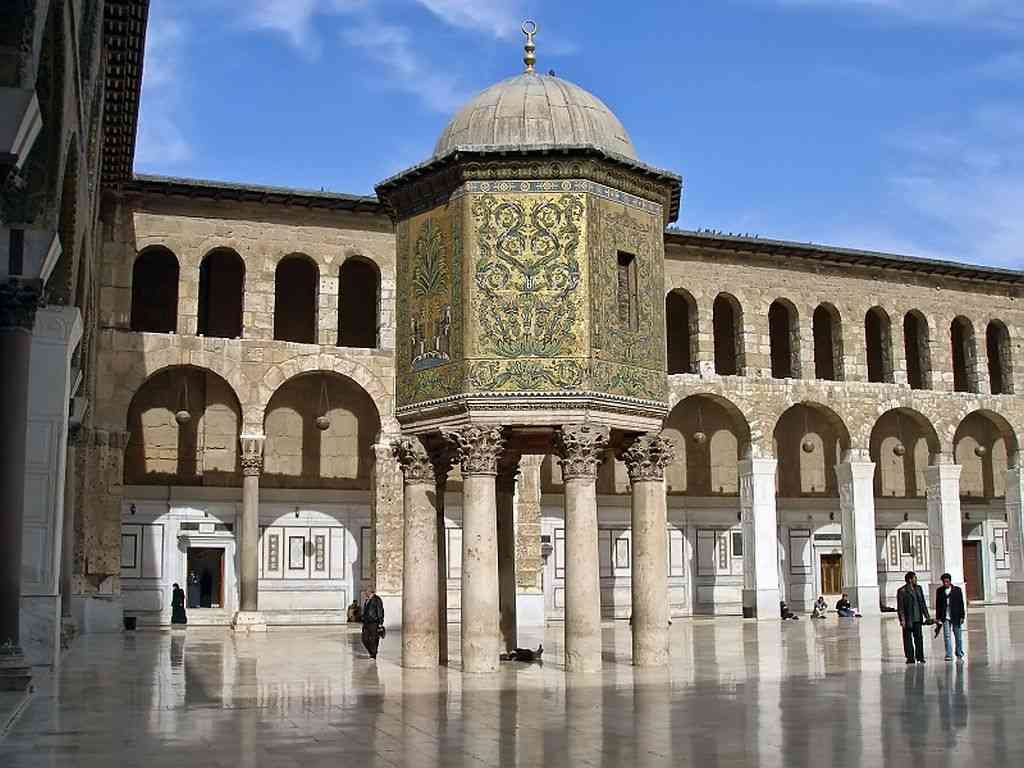
It is a dome built in the main yard of the building and people were collecting money in it. It was designed on pillars of the muqarnas style and the hull eight on each face is decorated with Islamic inscriptions and plants and is considered a masterpiece in the architectural style
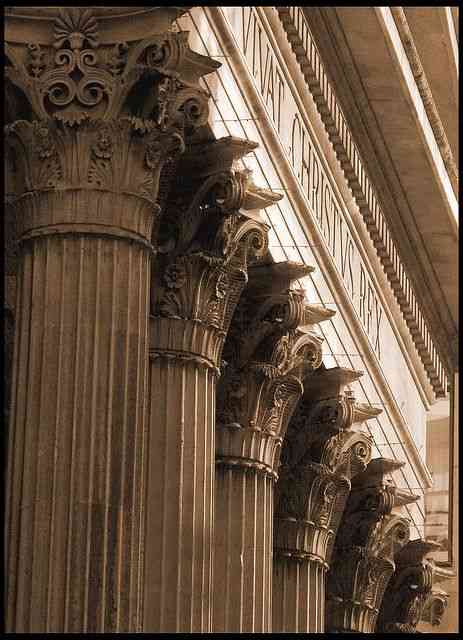
"The best shape for carrying the dome is the octagonal shape, which is the best from the point of view of vision, and it is closest to the shape of the circle, so it is familiar to the viewer, and the concept that emerges from the dome is the shape of the sky, as it reflects the shape of the heavenly dome and the connection between the earth and the sky, that is, between God and man."
Thanks for reading!
Sources:
[1] https://en.wikipedia.org/wiki/Hadad
[2] gpsmy city,"Roman Temple of Jupiter, Damascus "Retrieved:(11/8/2020) https://www.gpsmycity.com/attractions/roman-temple-of-jupiter-36617.html
[3] ابن كثير كتاب البداية والنهاية ج12 الصفحة 404 ، مكتبة الشاملة نسخة محفوظة 30 يوليو 2017 على موقع واي باك مشين.

